| Weight | 1 lbs |
|---|---|
| Dimensions | 9 × 5 × 2 in |
| host | rabbit |
| isotype | IgG |
| clonality | polyclonal |
| concentration | 1 mg/mL |
| applications | ICC/IF, WB |
| reactivity | BACH1 |
| available sizes | 100 µg |
rabbit anti-BACH1 polyclonal antibody 6739
$376.00
Antibody summary
- Rabbit polyclonal to BACH1
- Suitable for: WB
- Isotype: Whole IgG
- 100 µg
rabbit anti-BACH1 polyclonal antibody 6739
| antibody |
|---|
| Tested applications WB |
| Recommended dilutions Immunoblotting: use at 1:500-1:1,000 dilution. A band of approximately 81 kD is detected. |
| Immunogen Peptide corresponding to aa 1233-1249 of the human BACH1 protein. |
| Size and concentration 100µg and lot specific |
| Form liquid |
| Storage Instructions This antibody is stable for at least one (1) year at -70°C. Avoid multiple freeze- thaw cycles. |
| Storage buffer PBS, pH 7.4. |
| Purity immunogen affinity purification |
| Clonality polyclonal |
| Isotype IgG |
| Compatible secondaries goat anti-rabbit IgG, H&L chain specific, peroxidase conjugated, conjugated polyclonal antibody 9512 goat anti-rabbit IgG, H&L chain specific, biotin conjugated polyclonal antibody 2079 goat anti-rabbit IgG, H&L chain specific, FITC conjugated polyclonal antibody 7863 goat anti-rabbit IgG, H&L chain specific, Cross Absorbed polyclonal antibody 2371 goat anti-rabbit IgG, H&L chain specific, biotin conjugated polyclonal antibody, crossabsorbed 1715 goat anti-rabbit IgG, H&L chain specific, FITC conjugated polyclonal antibody, crossabsorbed 1720 |
| Isotype control Rabbit polyclonal - Isotype Control |
| target relevance |
|---|
| Protein names Transcription regulator protein BACH1 (BTB and CNC homolog 1) (HA2303) |
| Gene names BACH1,BACH1 |
| Protein family BZIP family, CNC subfamily |
| Mass 81958Da |
| Function FUNCTION: Transcriptional regulator that acts as a repressor or activator, depending on the context. Binds to NF-E2 DNA binding sites. Plays important roles in coordinating transcription activation and repression by MAFK (By similarity). Together with MAF, represses the transcription of genes under the control of the NFE2L2 oxidative stress pathway (PubMed:24035498). {ECO:0000250|UniProtKB:P97302, ECO:0000269|PubMed:24035498, ECO:0000269|PubMed:39504958}. |
| Subellular location SUBCELLULAR LOCATION: Nucleus {ECO:0000255|PROSITE-ProRule:PRU00978, ECO:0000269|PubMed:24035498}. |
| Structure SUBUNIT: Heterodimer of BACH1 and MAFK. {ECO:0000250|UniProtKB:P97302}. |
| Post-translational modification PTM: Ubiquitinated by the SCF(FBXL17) complex or by the by the SCF(FBXO22) complex, leading to its degradation by the proteasome. Under oxidative stress, reactive oxygen species covalently modify cysteine residues on the bZIP domain of BACH1 and release it from chromatin. If the BTB domain of BACH1 remains intact, its beta1-alpha6 degron is recognized by FBXO22, promoting its ubiquitination and degradation. If the structural integrity of the beta1-alpha6 degron is compromised, FBXL17 will transiently associate with the BACH1 BTB dimer and remodel it into stably bound monomer for ubiquitination and degradation (PubMed:39504958). {ECO:0000269|PubMed:24035498, ECO:0000269|PubMed:39504958}. |
| Target Relevance information above includes information from UniProt accession: O14867 |
| The UniProt Consortium |
Data
| No results found |
Publications
| pmid | title | authors | citation |
|---|---|---|---|
| We haven't added any publications to our database yet. | |||
Protocols
| relevant to this product |
|---|
| Western blot IHC ICC |
Documents
| # | SDS | Certificate | |
|---|---|---|---|
| Please enter your product and batch number here to retrieve product datasheet, SDS, and QC information. | |||
Only logged in customers who have purchased this product may leave a review.
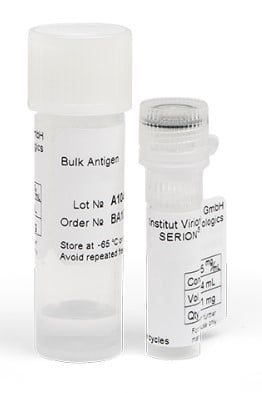
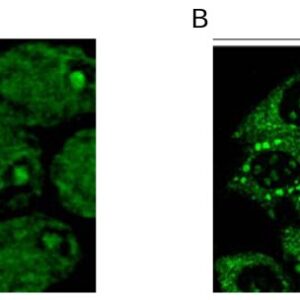
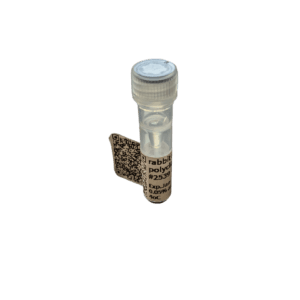
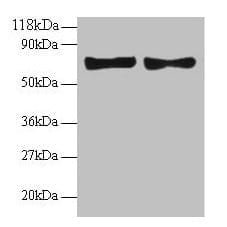
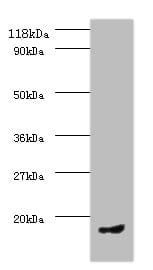

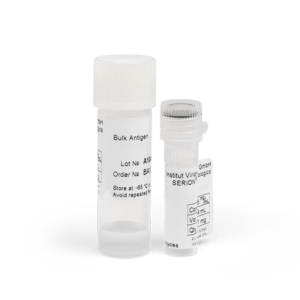
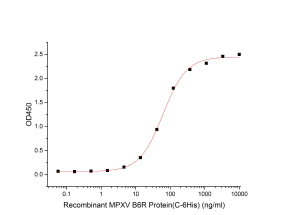
Reviews
There are no reviews yet.